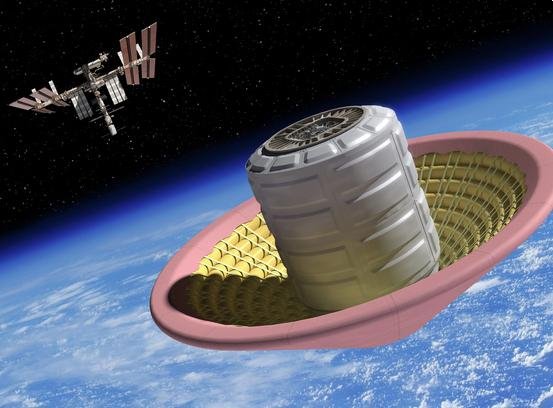Artist's impression of the IRVE-3 inflatable heat shield. Credit: NASA
WALLOPS ISLAND, Va., July 24 (UPI) -- NASA says it has tested a large inflatable heat shield that survived a trip through Earth's atmosphere travelling at hypersonic speeds up to 7,600 mph.
The Inflatable Reentry Vehicle Experiment, or IRVE-3, was launched by sounding rocket Monday from its Wallops Flight Facility on Wallops Island, Va., the space agency reported.
The test was intended to show a space capsule could use an inflatable outer shell to slow and protect itself as it enters an atmosphere at hypersonic speed during planetary entry and descent, such as in missions to Mars, or in returns to Earth with cargo from the International Space Station, NASA said.
"It's great to see the initial results indicate we had a successful test of the hypersonic inflatable aerodynamic decelerator," James Reuther, deputy director of NASA's Space Technology Program, said.
"This demonstration flight goes a long way toward showing the value of these technologies to serve as atmospheric entry heat shields for future space."
IRVE-3 is a cone of uninflated high-tech rings covered by a thermal blanket of layers of heat resistant materials.
About 6 minutes into its suborbital flight, the 680-pound inflatable aeroshell, or heat shield, and its payload separated from the launch vehicle, then an inflation system pumped nitrogen into the shell until it expanded to a mushroom shape almost 10 feet in diameter.
Ground controller monitors video from four onboard cameras that confirmed the inflatable shield held its shape despite the force and high heat of reentry.















